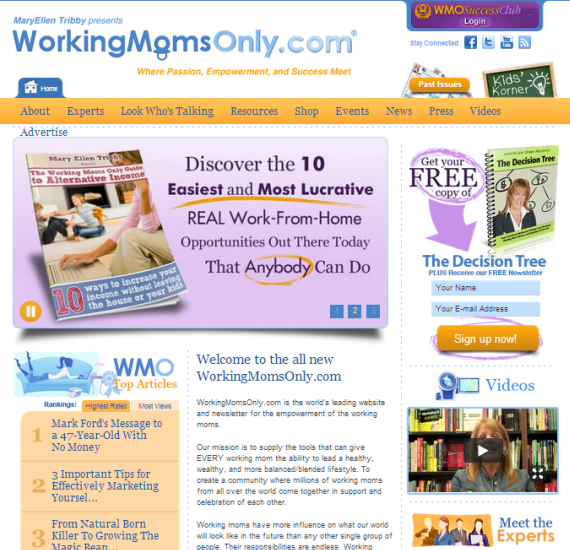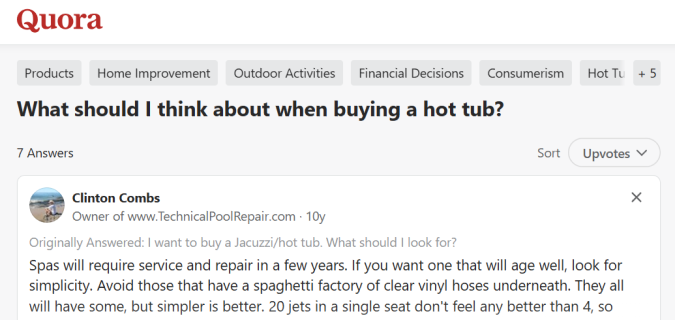Creating a high-performance website doesn’t happen by chance.
We often fall short of real success. Not because we’re written bad copy or made the wrong offer, but because we use the wrong website format.
How do you know the best structure to use?
According to Brian Massey, Conversion Scientist and author of Your Customer Creation Equation, there are five basic formulas for websites.
Just pick the one that fits your business model, and you’ll remove all the guesswork about how to structure your website. As a bonus, you’ll probably sell more too.
You’ll get better results with less work.
5 Website Formats to Get Better Results in 2018
The brochure site
Many brick-and-mortar businesses create this type of website because they don’t actually want to sell online. They only want to help people find their store.
Dallas’ Lure Salon is a good example.
The brochure site is often a kickback to the early internet. It stems from the mindset that simply having an online footprint is enough—so it provides basic information such as benefits and features, store location, and a map to help you find them quickly.
According to Massey, this is a safe bet if you only want a basic online presence.
What this website needs:
- A professional design that builds brand recognition
- Well-defined value proposition
- Easy-to-find contact information
The publication site
The Crazy Egg blog fits into this category. As does Mashable, CNN, The Onion, and, most likely, your personal blog.
A newsletter site, such as MaryEllen Tribby’s WorkingMomsOnly, is a classic publication site.
This type of site functions much like a traditional media company, providing original or curated content and generating income through subscriptions, ads, sponsors, or even donations.
What this website needs:
- Good navigation and search functionality that makes it easy to find content
- Email and social media for promoting content
- Opt-in for email and/or subscription
The online store
Think Amazon, and you’re there. But Amazon isn’t the only online store out there. They come in all sizes and can be structured in a variety of ways.
For example, look at this one from 39dollarGlasses:
An online store may exist purely to sell products, offering hundreds or even thousands of items—or it may have just one product for sale.
So it could equally apply to Amazon and Ebay or a one-page micro-site selling a better hairbrush.
What this site needs:
- Focus on solving your customers’ pain, not selling your products
- Persuasive landing pages optimized for selling and search
- Easy-to-use shopping cart
- Social proof that builds trust
The consultative site
The consultative site is typical of businesses (particularly B2B) with long sales cycles.
This one, by GuideStone Financial Services, is a good example:
Research has shown that approximately 60% of the B2B sales process is completed before the buyer ever talks to a salesperson. These days, people rely on your website for information and support to help them decide if they want to talk to you.
With this in mind, consultative sites often provide presentations, white papers, case studies, and other sales collateral that attract and nurture prospects. They also include trust-building elements, such as a blog and social sharing buttons.
What this site needs:
- Content that helps people understand their problem and your solution
- Useful long-form content available for opt-in
- Email to nurture relationship and build trust
The online service
An online service may be your accounting software, cloud storage, or email service. It could even be a dating service.
As it turns out, Crazy Egg’s main website is the perfect example of this type of website:
For many online service websites, the home page is formatted as a landing page. This makes it easy to answer all questions and build people’s confidence to try your service.
One way to do that is with the “freemium” offer, with paid upgrade that gives you more (and better) features.
Crazy Egg, for instance, allows a free trial period that upgrades to paid service at the end of the trial. MailChimp offers a basic email service for free. To access more advanced features, such as autoresponder emails, you need to upgrade to paid service.
What this site needs:
- Well-written sales copy that persuades people to try your product
- Effective email follow-up to turn triers into users
- Support to help people get the most from your product—so they’ll buy it and recommend it.
How to pick the website format that’s right for you
Ultimately, you want to pick the formula that helps your website convert. It’s easy if your business clearly fits one of the formulas. If not, you may need to do some strategic planning to determine which one fits your business model or sales funnel best.
Start by identifying which formula (or blend of formulas) you currently use.
Then determine whether it’s the right one for your business model. Does it help you achieve your business goals? Does it attract qualified prospects? Does it convert well?
Brian lists three reasons you might need to try a different formula:
- You might be using the wrong formula for the type of business you run.
- The formula you’re using isn’t resonating with your customers—they want your site to use a different formula.
- Your business model or marketing plan allows for different models—for instance, an online store that differentiates itself by following an online service model. In this case, you could use the online store or the online service formula.
Still not sure which formula to use?
You may need a blend of formulas.
Let’s say that you sell software to enterprise organizations, but your big selling point is that you offer a done-for-you service…
You provide a worry-free solution, taking care of installation, training, and reporting. Customers are assigned an account manager who works closely with them to make the product work…
But because your selling cycle is long (it’s an expensive solution), you publish a lot of white papers and case studies on your website, and you manage a well-regarded industry blog to build trust…
Then, to add another income stream, you also publish how-to books that help smaller businesses apply your methods to their own website.
Are you an online store? Yes.
Are you an online service? Yes.
Are you a publisher? Yes.
Which formula should you use? Perhaps all three. You could have:
- Web pages that talk about the problems your prospects are experiencing and clearly explain your solutions.
- Clear navigation and a search bar that help newcomers find your content and/or products.
- Landing pages describing your products—both the enterprise done-for-you software and the how-to books.
- Shopping cart for people to purchase their books.
- Opt-in forms collecting people’s information when they download reports or purchase books.
- Strong social media presence that brings visitors to your site to read your content, and establishes you as a thought leader in your space.
- Effective email marketing program that keeps your brand top of mind before the purchase and supports customers afterwards.
The idea is to blend the strategies of each formula to create a powerful conversion equation that’s customized to your business.
Which formula is right for your business? Share your thoughts in the comments below.
Oh, and don’t forget to read Brian’s book. You’ll get strategic guidance to selecting the formula that’s right for you, and some other useful insights as well.












